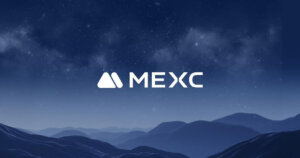U.S. Bank Wells Fargo Files Data Tokenization Patent
Photo by Collin Armstrong on Unsplash
Institutional bank Wells Fargo applied for a token-based patent on July 17, 2018, detailing a tokenization system method that protects customer data.
Bank Addresses Tokenization Benefits
According to a filing published by the U.S. Patent and Trademark Office (USPTO), the San Francisco-based bank seeks to create a system that locates various data elements, such as collated value, graphic, or document, in a private database accessible and protected by an ingenious tokenization process.
As outlined in the patent, Wells Fargo describes an encryption method to process an “unrestricted” data element into a “restricted” token which can only be accessed by an authorized user. In this regard, only the user can burn, or “detokenize,” the underlying set of stored data.
A sophisticated cryptographic process is transcribed in the patent, which is used to ensure specific data sets are contained within a particular token and corresponding authorized digital signature.
Due to the use of tokens, the process can authenticate data origins, maintain data integrity, control ownership confidentiality, and access and prevent any unscrupulous modifications to the values.
Flexible Token System
Interestingly, the patent claims to work in different environments, such as cloud-servers, blockchains, and other publically-accessible datasets, indicated the tokenization process is not wholly-limited to distributed ledger technology (DLT).
Also, the framework can be supported by existing systems and supports single signers, multi-signers, and even co-signers “to store information publicly without loss of confidentiality of any sensitive content.”
Furthermore, data owners are enabled with relevant tools to select a “tokenization output” for ensuring accurate content delivery, i.e., the system administrators can choose the type of file and amount to be used, including blurring out or randomizing text in sections irrelevant to the viewer’s usage.
Wells Fargo described the need for such a system in today’s context:
“The data element tokenization system provides technical solutions to the computer-centric and internet-centric problems associated with conventional data management systems.”
The bank added its “data element tokenization system,” according to various arrangements, effectively provides an efficient mechanism to the industry by providing a flexible, yet restrictive, system of publicly and globally accessible data.
Interestingly, the bank noted such tokenization techniques create an information repository that may “exceed the lifetime of encryption techniques.”
Tokenization 101
For the uninitiated, the tokenization process involves substituting a data element for a “token” proxy which eliminates the need to share the sensitive underlying data.
For example, a token for a credit or debit card may entail the former is processed for details during a transaction, instead of the latter.
Additionally, datasets do not have to adhere to a particular data type for use in a token system, as the system matches a plurality of datasets with a digital signature – which allows for their secure location during an information search.
Although the Wells Fargo patent does not explicitly use blockchain technology, the bank has burrowed modern cryptography and data tokenization techniques used by cryptocurrencies. Interestingly, the tokenization is well addressed, and acknowledged, throughout the patent.




 CryptoQuant
CryptoQuant 














































































